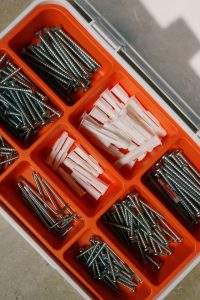
When most people think of screws, they envision traditional threaded fasteners with a pointed tip and a head. Screws are available in a variety of materials, sizes and specifications. While most of them feature this traditional design, though, some of them feature an alternative design. There are set screws, for instance, that are devoid of a head. They don’t have the same head as that of traditional screws. What are set screws exactly?
Overview of Set Screws
Also known as blind screws, set screws are fasteners that consist entirely of a threaded rod. They don’t have a head, nor do they have a tip. Instead, set screws only consist of a rod with uniform threading. The threading typically runs the entire length of a set screw. From the top to the bottom, threading covers the exterior.
Set Screws vs Traditional Screws
Set screws are different than traditional screws. As previously mentioned, they don’t have a head or tip. The head is a common part of a traditional screw. It may feature a recess that supports a flat-head or Philips head bit, or it may feature a hexagonal shape that supports a wrench. Regardless, you can install and remove a traditional head by engaging the head with the appropriate bit.
In addition to a head, traditional screws have a tip. The tip is the pointed end that digs into materials or workpieces. You won’t find a tip on set screws. Set screws are simply threaded rods. They don’t have a tip or a head. Set screws are characterized entirely as threaded rods.
Applications for Set Screws
Being that they don’t have a head or tip, you might be wondering what set screws are used for. Set screws have several applications, one of the most common being to join two parts together. Assuming two parts have threaded holes in the appropriate size, they can be joined with a set screw. Half of the set screw is inserted into one of the parts, and the other half is inserted into the opposite part. The set screw will then join the two parts together while ensuring that they are flush.
Set screws are commonly used in pulley and shaft systems. A set screw can be used to join a pulley to a shaft. They can be installed using a wrenching drive, like a hex socket. Set screws allow pulleys to connect to a shaft.
